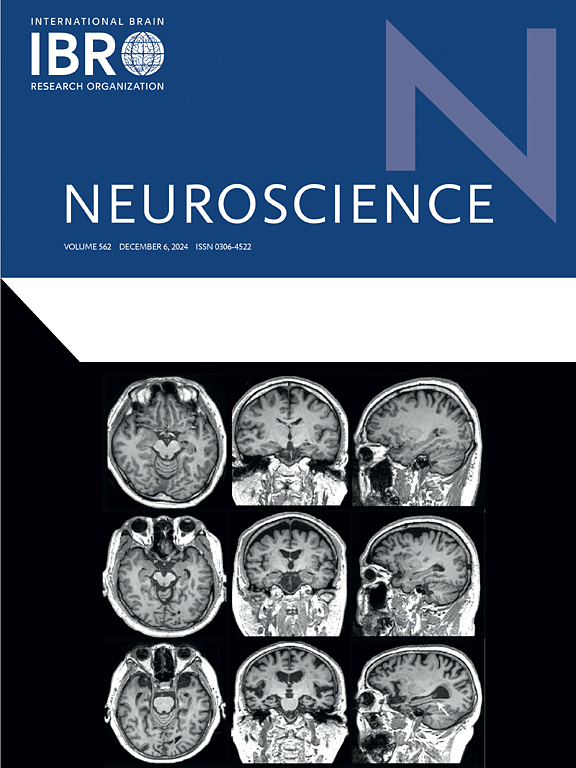Gabaergic neurons of central amygdala mediate anxiety-like behavior induced by social isolation in adolescent mice
IF 2.8
3区 医学
Q2 NEUROSCIENCES
引用次数: 0
Abstract
Exposure to social isolation stress during critical developmental stages escalates vulnerability to psychiatric disorders and may provoke abnormal activity in specific brain regions. In this study, we investigate the neural mechanisms underlying mood alterations following chronic social isolation stress in adolescent mice. Utilizing immunofluorescence, viral injection, in vivo calcium signal recording, and in vitro brain slice electrophysiological recordings, we found that heightened activity of GABAergic neurons in the central amygdala (CeA) contributes to anxiety-like behaviors in adolescent mice exposed to chronic social isolation stress. Inhibiting CeA GABAergic neurons through chemogenetics mitigates anxiety-like behaviors observed in emotional assessments, while activating these neurons elicits anxiety effects in various emotional measures, including the light/dark box (LDB), open field (OF), and elevated plus maze (EPM) tests. These findings not only underscore the abnormalities in brain regions caused by social isolation stress but also identify a potential target for clinical intervention.
中央杏仁核Gabaergic神经元介导青春期小鼠社会隔离诱导的焦虑样行为
在关键的发育阶段暴露于社会隔离压力会增加对精神疾病的脆弱性,并可能引起特定大脑区域的异常活动。在这项研究中,我们研究了青春期小鼠慢性社会隔离应激后情绪变化的神经机制。利用免疫荧光、病毒注射、体内钙信号记录和体外脑切片电生理记录,我们发现中央杏仁核(CeA) gaba能神经元活性升高有助于长期社会隔离应激的青春期小鼠的焦虑样行为。通过化学遗传学抑制CeA - gaba能神经元可减轻情绪评估中观察到的焦虑样行为,而激活这些神经元可在各种情绪测试中引发焦虑效应,包括光/暗盒(LDB)、开放场(OF)和升高加迷宫(EPM)测试。这些发现不仅强调了由社会隔离压力引起的大脑区域异常,而且还确定了临床干预的潜在目标。
本文章由计算机程序翻译,如有差异,请以英文原文为准。
求助全文
约1分钟内获得全文
求助全文
来源期刊

Neuroscience
医学-神经科学
CiteScore
6.20
自引率
0.00%
发文量
394
审稿时长
52 days
期刊介绍:
Neuroscience publishes papers describing the results of original research on any aspect of the scientific study of the nervous system. Any paper, however short, will be considered for publication provided that it reports significant, new and carefully confirmed findings with full experimental details.
 求助内容:
求助内容: 应助结果提醒方式:
应助结果提醒方式:


